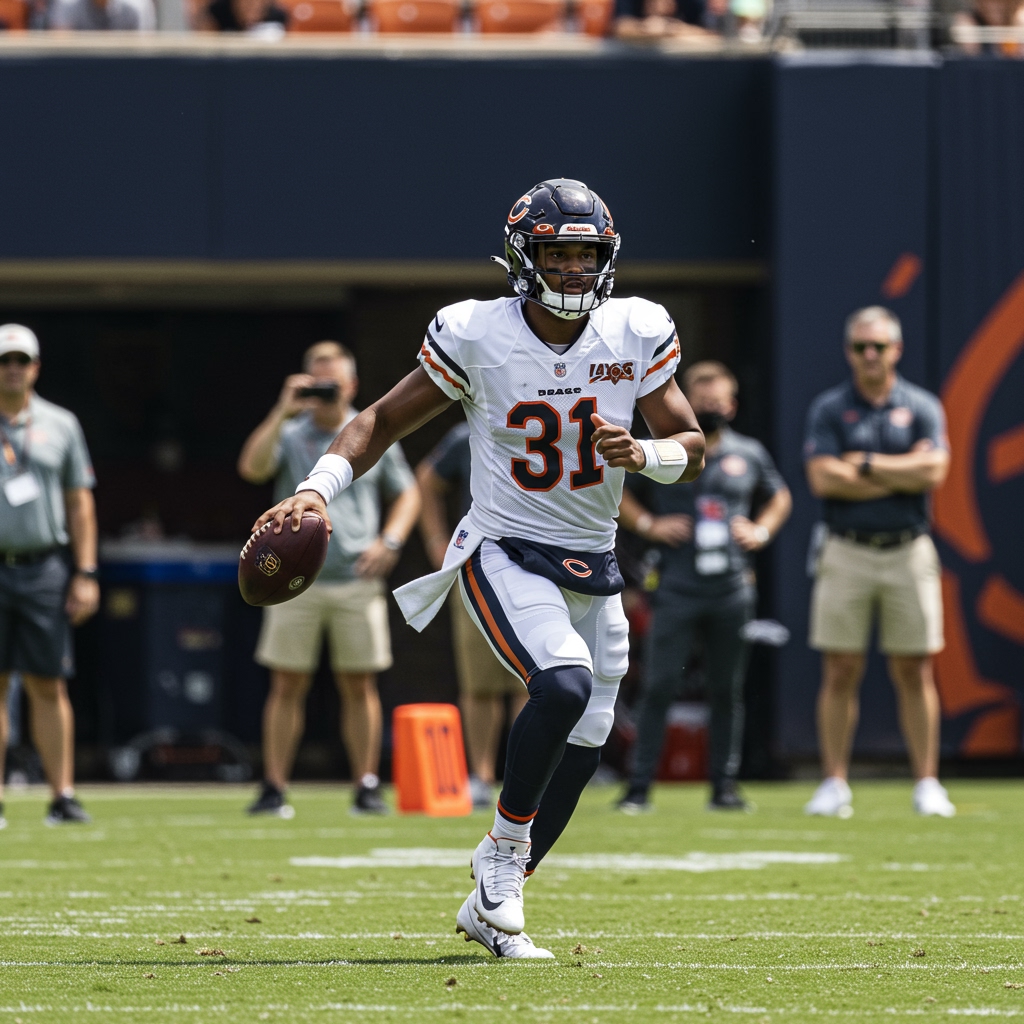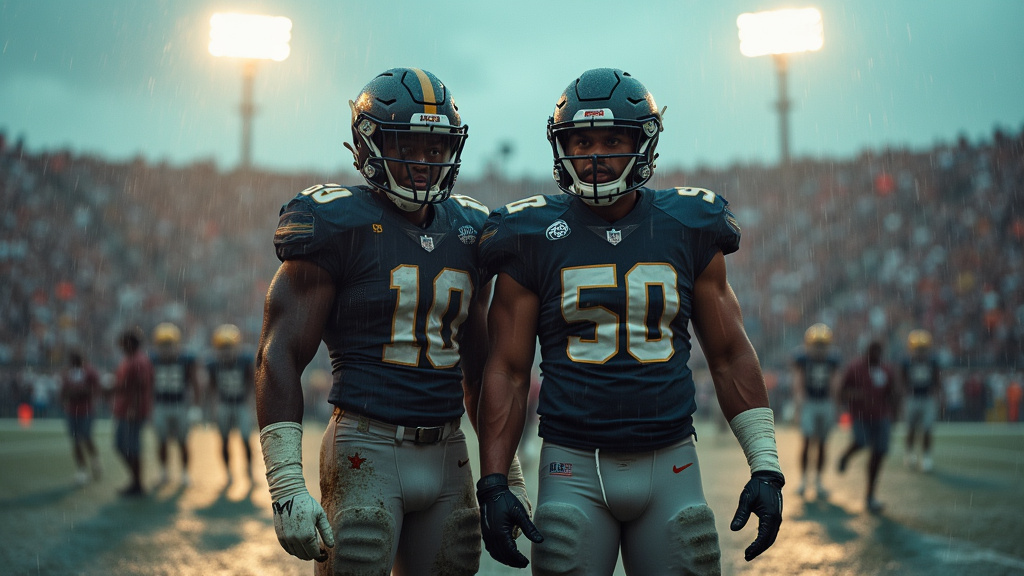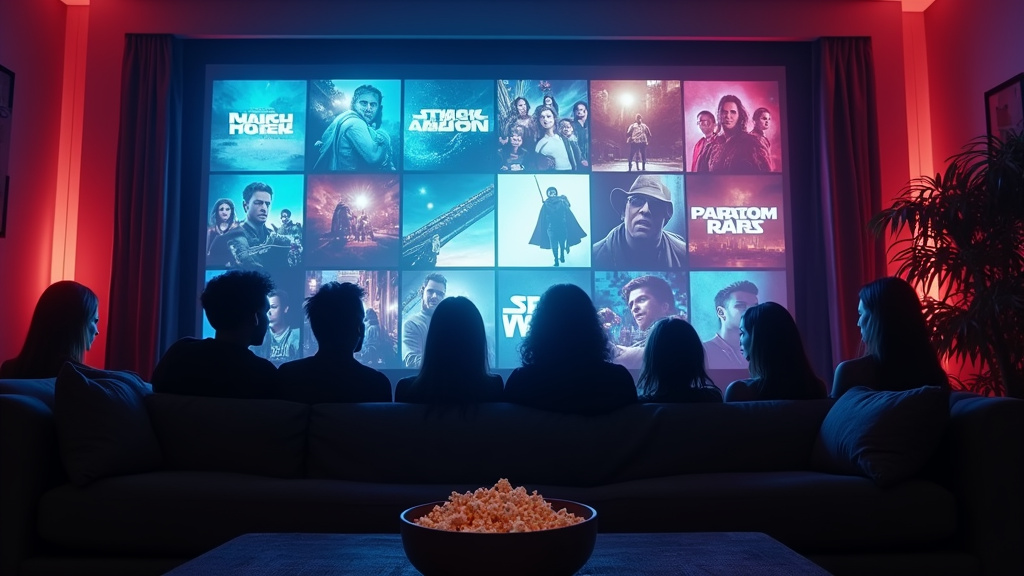The Chicago Bears have officially kicked off their mandatory minicamp this week at the team’s headquarters, Halas Hall in Lake Forest, Illinois. This crucial three-day period marks the final set of organized team activities (OTAs) before players disperse for the summer break, serving as a vital checkpoint for the coaching staff to evaluate progress and identify key areas for improvement heading into training camp in July. The atmosphere is one of focused intensity, as players and coaches alike recognize the significance of these final full-team sessions.
Primary Focus: Quarterback Development
As anticipated, a paramount focus during the minicamp is squarely placed on the continued development and integration of the quarterback position. With significant changes made to the quarterback room during the offseason, including the arrival of highly touted rookie draft pick Caleb Williams, the emphasis on building chemistry and operational fluency is paramount. The offensive system under new Offensive Coordinator Shane Waldron is being further implemented, and these mandatory sessions provide an invaluable opportunity for the quarterbacks to refine their understanding and execution alongside their teammates. This includes everything from mastering the playbook concepts to developing the non-verbal communication necessary for a high-functioning NFL offense.
Head Coach Matt Eberflus has been vocal about the objectives for this week, specifically highlighting the importance of refining offensive timing and chemistry. This isn’t just about individual throws; it’s about the rhythm between the quarterback, receivers running routes, the tight ends, and the offensive line’s protection calls. Perfecting this timing involves countless repetitions, ensuring receivers hit their marks at the precise moment the ball is delivered and that protection schemes align with play calls. The minicamp setting, being mandatory, allows for full-team reps that are critical for developing this collective synchronicity, something that can be harder to achieve during voluntary workouts where attendance may vary.
Coach Eberflus’s Expectations
Coach Eberflus detailed his expectations for the minicamp, stressing the need for precision and consistency across the board. He indicated that the team is looking for players to demonstrate a solid grasp of the offensive and defensive schemes installed throughout the earlier phases of OTAs. For the offense, the focus on timing and chemistry extends to situational football, red zone execution, and third-down efficiency – areas where precise coordination between the quarterback and skill players is non-negotiable. Eberflus’s message to the team emphasizes leveraging these three days to maximize learning and execution before the break. The coaching staff will be evaluating how quickly players process information, adapt to different defensive looks, and execute plays crisply under realistic practice conditions.
This period is particularly important for the younger players, especially the rookie draft picks, who are experiencing the full pace and complexity of NFL practices for the first time with the entire veteran roster present. Their ability to integrate into the system, understand terminology, and execute assignments effectively is under keen observation. Veterans play a critical role here, providing guidance and setting the standard for practice tempo and professionalism. The presence of key players throughout the roster ensures that the practice environment is competitive and indicative of the level of performance expected in training camp and the regular season.
The Three-Day Mandate: A Critical Evaluation Point
The minicamp structure is a compact but intense three days, running through Wednesday, June 12th. Unlike voluntary OTAs, mandatory minicamp requires the attendance of all players under contract, barring injury or approved absence. This ensures the coaching staff has the full complement of the roster available for drills, team periods, and evaluations. The practices during minicamp often mirror the structure and intensity, though not the contact level due to collective bargaining agreement rules, of training camp sessions.
This makes the minicamp a critical evaluation opportunity. Coaches are assessing more than just physical ability; they are looking at mental processing, leadership qualities, consistency in execution, and how players perform within the team structure. For players competing for roster spots or significant roles, performance during these three days can heavily influence their standing entering training camp. It’s the last formal impression players will make on the coaching staff before the break, providing a baseline for their individual off-season work and setting the stage for position battles that will heat up in July. The evaluations conducted this week will help the staff finalize plans for training camp schedules, depth chart initializations, and individual player development goals for the summer.
Looking Ahead to the Summer and Training Camp
Following the conclusion of the mandatory minicamp on June 12th, players will enter a period of summer break. While the team is not conducting official activities, players are expected to adhere to strength and conditioning programs provided by the team and continue refining their skills independently or in informal group settings. The lessons learned and the areas for improvement identified during minicamp will guide players’ individual work over the next month.
The anticipation will then build towards the opening of training camp in July. Training camp marks the transition to full-padded practices, live contact, and preseason games, offering the most realistic preparation for the regular season. The foundation laid during the earlier OTA phases and solidified during the mandatory minicamp will be crucial for players to hit the ground running in training camp. The performance of the quarterback position, specifically the continued progress in mastering offensive timing and chemistry witnessed this week at Halas Hall, will remain a key storyline and a major determinant of the team’s readiness for the challenges ahead in the upcoming NFL season.











